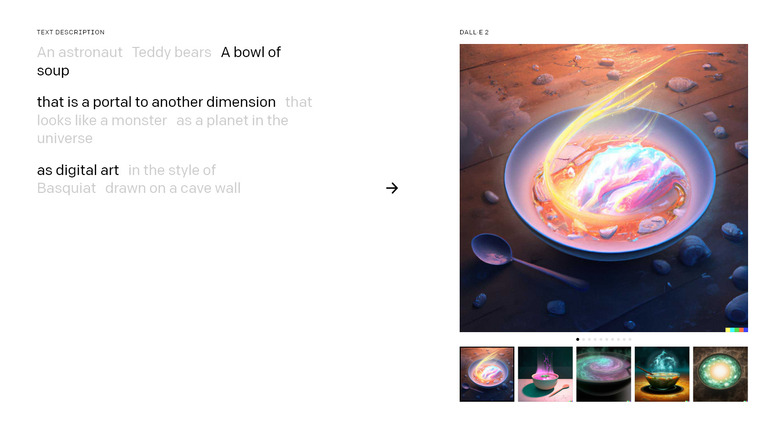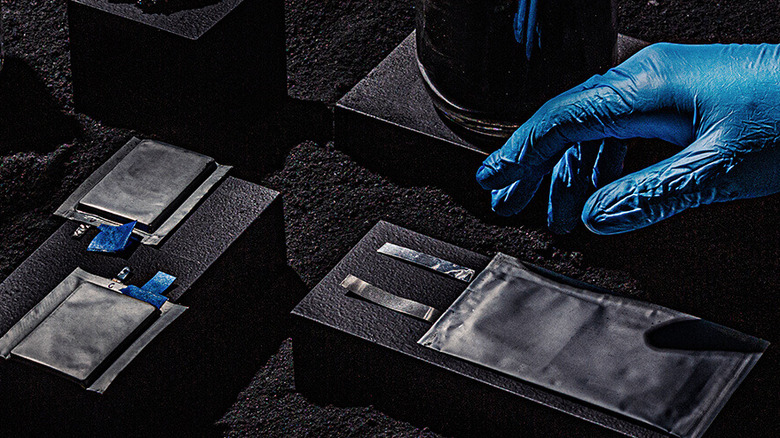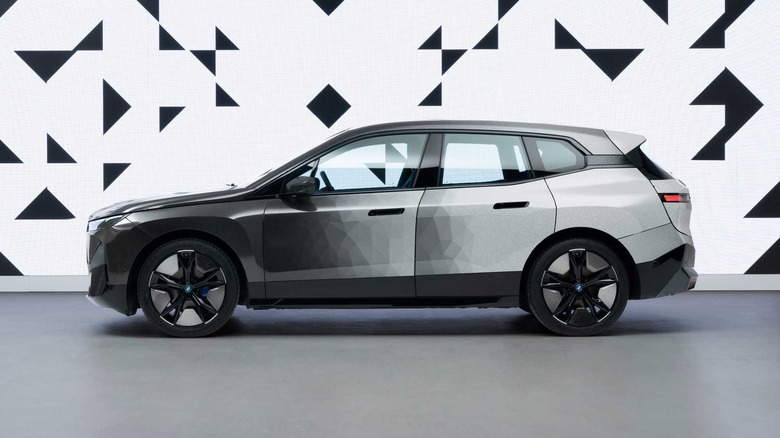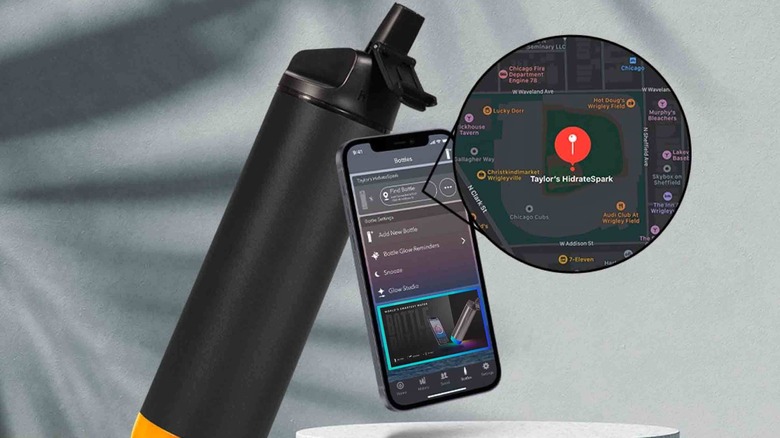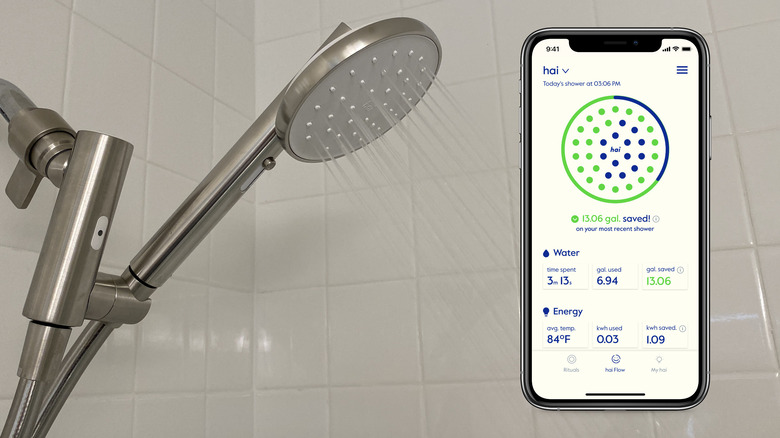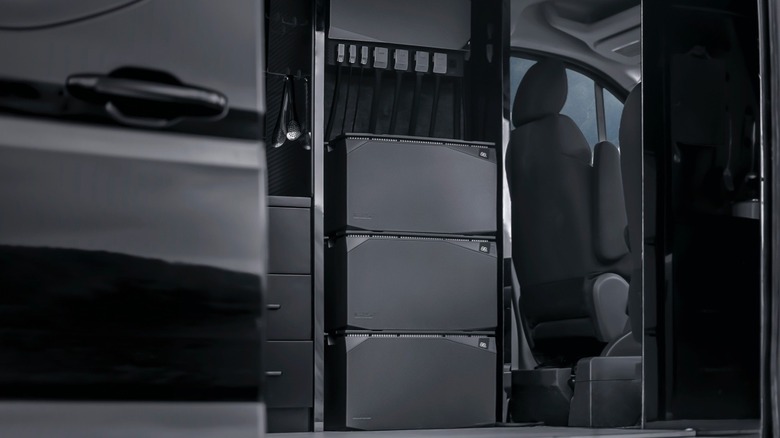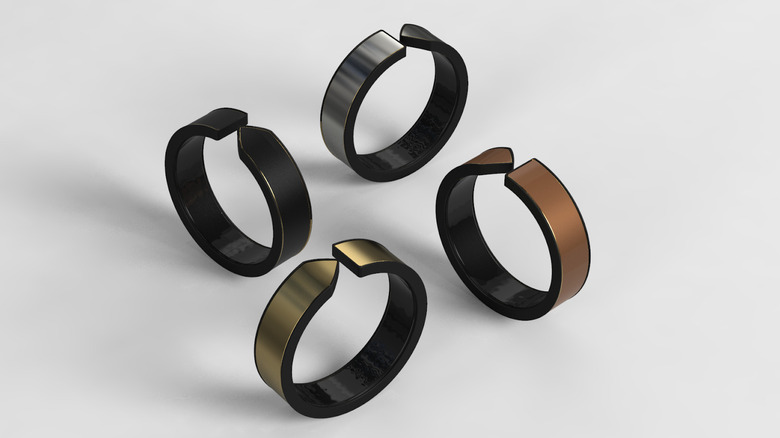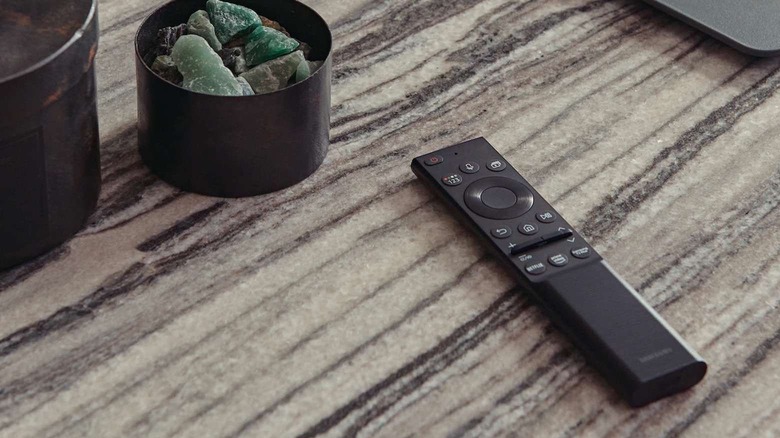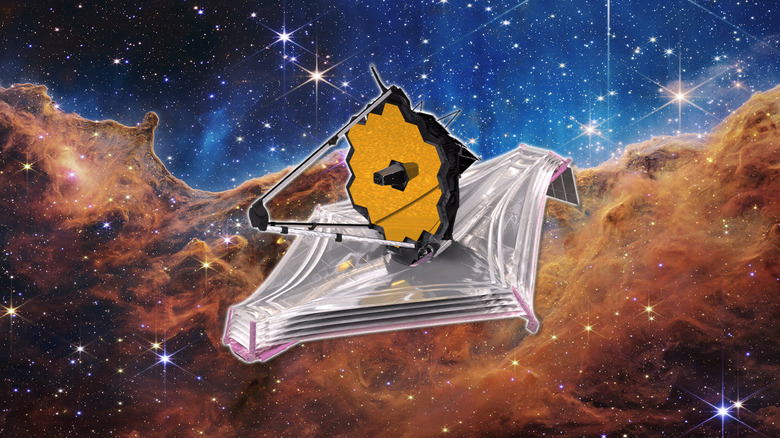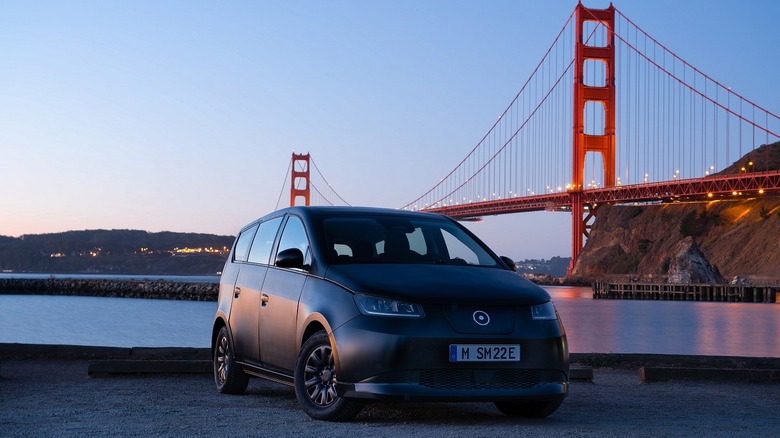The Best New Tech Inventions Of 2022
Over the last few years of the pandemic, the constraints on daily life have spurred real innovation in tech that we'll use every day. The day electric vehicles replace the combustion engine is getting nearer, driven by advances in battery technology and artificial intelligence (AI). That's just one place AI is making inroads; others include image generation, reproduction of voices, and reviewing beer and wine.
Miniaturization and optimization of electronics and sensors have enabled fitness trackers to shrink into finger rings. NASA has been busy setting up the next two decades of observing the universe from outer space. Other companies have been creating ways to improve our daily lives since we spend so much more time at home. New display technology is making its way to the consumer market. Different ways to harness, harvest, and store energy have all enabled a reduction of single-use batteries. As the year marches towards its close, let us take a look at some of the best innovations in tech it produced.
DALL-E and other AI image generators
The latest buzz around artificial intelligence (AI) concerns AI-powered image generators. These new tools take a text prompt and turn those words into images or paintings. That's all the end user needs to do to get a usable piece of art they could enter into art contests and potentially win (via NYT). That's a simplistic overview, as the AI image-generating tools need the user to curate the prompt words to get the desired results.
The most well-known tools are DALL-E 2, Midjourney, and Stable Diffusion. Those are open to the public; anyone can sign up to generate artwork. Google has its own AI image generator, Imagen, which won't be released to the public as it tends to "reinforce gender stereotypes and 'bias towards generating images of people with lighter skin.'" Those reinforced biases come from the training data, with the image set used including inappropriate content, like racial slurs or pornography. Other AI image generators scraped art websites for their datasets, raising thorny issues around copyright, derivative works, and ethics. Whatever your feelings are on generative images, AI-created art is here to stay.
Silicon battery tech
Most lithium-ion batteries use graphite for the anode, with researchers calling it a "perfect anode" for its "low cost, abundance, high energy density, power density, and very long cycle life"(via Science Direct). Graphite anodes have a specific capacity of 350 mAh/g, over double that of nickel-metal hydride batteries (via PSSL). For over a decade, researchers have known that silicon anodes could increase that specific capacity even further. PSSL says the theoretical limit for silicon is "more than 10 times that of graphite," or at least double in practical terms.
The problem was that the same properties that make silicon anodes suitable for energy storage in lithium-ion batteries are also the same properties that make them break down quickly. A silicon-carbon powder from Group14 might have the solution, with "five times the capacity" and affording "up to 50% more energy density than conventional graphite for lithium battery anodes." That could solve the energy equation for long-range EVs with faster-charging lithium-ion and solid-state battery tech.
Color changing cars
BMW brought super-spy movie color-changing tech to the real world with the BMW iX Flow. The all-electric SUV is covered in E Ink's flexible display tech, with independent control over sections across the body panels. That's the same display tech that powers your Kindle. BMW says the color shift between light and dark can improve energy use, as white surfaces reflect more light than dark ones. That means the interior will be more comfortable when the E Ink is set to white. Notably, that reduces power use on the battery on the electric vehicle, improving range. The reverse is true for cold days when the car could go dark to absorb more warmth from the sun.
BMW has different use cases for the tech, like "show[ing] information on the surface of the car: the battery status on a car-sharing car, or we could make the car blink if you've lost your car." The tech can also create patterns, stripes, or other designs on the car to suit the driver's mood. With E Ink being efficient, it only needs electricity when changing color states.
HidrateSpark Pro smart water bottle
Staying hydrated is vital for optimal health. Everybody knows that, but knowing exactly how much you need to drink is often tricky. HidrateSpark's Pro smart water bottle aims to take the guesswork out of hydration. The vacuum-insulated water bottle is made from odor-resistant and shatter-proof stainless steel, with a flip-straw and a chug lid included so you can use the one you prefer. Both are BPA-free, which is nice, but the best part is the LED-covered puck at the base.
That puck is Bluetooth-enabled and reminds you to take another swig of water to stay optimally hydrated. The puck also syncs to Apple Health, tracking your liquid consumption and adjusting the timing between reminders based on your known exercise from your fitness metrics. The rechargeable battery gives 10-14 days of tracking, and the app has Apple Watch support for monitoring and notifications. Water consumption data gets piped to Apple Health, so you have all your important metrics in one place.
Hai smart showerhead
Smart tech is coming for every part of our home, with the bathroom prime real estate for conservation efforts. The Hai Shower might be the only shower head you ever need to buy, with easy installation and removal, perfect for apartment dwellers. It also gives you better water pressure while saving water, meeting the most restrictive U.S. water standards, and has an adjustable spray between spa-like mist and pounding jets.
That's all cool, but the real smarts are in the companion app and the hardware inside the shower head. Hai created a low-powered Bluetooth sensor powered by a tiny turbine from your water pressure, and the sensor measures temperature and flow. An RGB LED on the shower lets you know when your water is at your preferred temperature and changes color when you reach your pre-set water consumption goal. The system needs no user intervention, and the app connects to the shower to download its data after you're done. The ecosystem gamifies conservation efforts, which is good for the water bill and the planet.
EcoFlow Power Kits
It's never been easier to store energy for future use. Advances in battery, charging, and solar panel tech have combined to reduce our reliance on the national grid. EcoFlow has a sizable ecosystem of portable power stations, but the device it brought out in 2022 makes it even easier to live off the grid full-time. The EcoFlow Power Kits are a plug-and-play power solution for van life, tiny homes, or even larger homes. The heart of the kit is EcoFlow's smart lithium iron phosphate batteries which come in 2kWh or 5kWh capacities and self-regulate temperature, charging, and discharging.
If the batteries are the heart, the brain is the Power Hub, which contains all the components you need to put solar power storage into your build. That includes two Maximum Power Point Tracking (MPPT) solar charge controllers, a DC-DC battery charger, an inverter charger, and a DC-DC step-down converter. Everything uses specific, non-interchangeable connectors, making it easy to set up and manage. The best part is you can add an AC/DC Smart Distribution Panel, which breaks out the AC and DC inputs from the Power Hub into circuits like your home's breaker box. It also has complete app control and monitoring, both in Bluetooth range and away from the system, as it has WiFi connectivity.
C Seed unfolding TV
TV manufacturers have experimented with different ways to hide your screen when not in use, from making it look like a picture frame to rolling it away into a base unit. Now there's another option, which is hiding your TV under your floorboards. The C Seed M1 unfolding TV is worthy of a Bond villain's lair, with a folding design that has to be seen. It uses six MicroLED panels that unfold to sub-millimeter precision to create a 4K TV. You won't see any creases like on foldable OLED, as Seed's TV uses separate panels with Adaptive Gap Calibration Technology to make the borders nearly invisible.
The cost of innovation is high, with a $400,000 price tag for the 165-inch model. That's without factoring in architect and builder fees for putting the unit under your living room floor. The company also has a version that doesn't need installation, as it folds into a large aluminum sculpture when not being used to binge-watch "Billions." The N1 starts from $190,000 for the 103-inch screen size. It also features 100W speakers, a 9.2-channel A/V receiver, and five HDMI inputs.
Movano smart ring
Fitness wearables are an established part of our daily lives, and Straits Research puts the market increasing by 17.5% annually (via GlobeNewswire), spurred by consumers who want healthier lives. Those wearables usually go around the wrist, but some have been miniaturized to live inside smart rings. Movano is readying its smart ring, which aims to enable the monitoring of chronic illnesses. When out, it will measure blood oxygen levels, calories burned, heart rate, heart rate variability (HRV), respiration, sleep, steps, and temperature.
That data will be presented in an easy-to-digest format, like showing how exercise affects your sleep or HRV trends. Movano's miniaturized technology is already impressive, but what really makes it groundbreaking is the company's woman-first approach to design. The company also wants the FDA Class II designation to market its devices for medical features. Expect both non-invasive glucose monitoring and cuffless blood pressure measurements to come to the device once clinical trials are completed.
Samsung's Eco Remote
Samsung first kicked replaceable batteries out of its Eco Remote in 2021 by adding a solar panel that could keep the remote topped up even from artificial light sources. That innovative change reduced landfill waste and the eventual user annoyance when the charge in the batteries ran down. For 2022, the Eco Remote can harvest energy from radio waves, like the WiFi signals that permeate your home. That should mean you never have to worry about your remote running out of power.
If you think that sounds like science fiction or magic, you're not alone. Author and futurist Arthur C. Clarke once said, "Any sufficiently advanced technology is indistinguishable from magic" (via Science), and wireless energy harvesting completely fits the bill. It uses radio frequency (RF) harvesting antennas to create an electric charge stored in capacitors to power the remote. The new Eco Remote never needs new batteries (or any batteries, for that matter) between harvesting RF and solar power, but it can still be charged via USB-C for quick use.
Slimline Augmented Reality glasses
With all the talk about living in the Metaverse, the technology required to step into a truly immersive virtual world has yet to arrive. Augmented reality (AR) could be a stepping stone to that vision, bringing virtual goods, experiences, and tools into the world we see daily. Augmented reality also meant bulky headsets like those from Magic Leap or Microsoft or nerdy devices like Google Glass. AR is now getting closer to the everyday-wear devices that could replace our phones with slimline AR glasses that look like sunglasses.
Companies like Viture or Nreal have given their slimline glasses effective virtual screens of over 120 inches. That's enabled by small OLED displays in your field of vision at full-HD resolution. The most significant selling point right now is private video streaming, so you can watch what you want, where you want, while not needing an external screen. While the smaller form factor will likely get more people into AR, these glasses still need an external device to play content from. With the rapid advancement of technology, it won't be long until AR glasses have both slimline dimensions while not being reliant on a secondary device. Perhaps that device will be the long-awaited Apple Glass.
NASA James Webb Space Telescope
NASA put the world's most powerful space telescope into commission in 2022. Currently a million miles away, orbiting the second sun-Earth Lagrange point or L2, the James Web Space Telescope (JWST) has been peering back into the universe's early days. For the next 20 years (via Space Telescope Science Institute), it will point at celestial objects that were created up to 13.6 billion years ago, just a couple of hundred million years after the Big Bang that spewed matter across the universe.
Even after a few short months of peering at the universe in near-infrared light, the JWST has produced some stunning images. Future plans for viewing targets include observing 100 galaxies at once, six of the most distant and brightest quasars, examining the atmospheres of known exoplanets, so-called super-Earths, planetary and star creation, and well-known regions like the Pillars of Creation. It will also focus on objects closer to home, like Jupiter and its moons, asteroids, and near-Earth objects. Like the Hubble Space Telescope that came before it, the JWST will accelerate our understanding and knowledge about the universe and our place in it.
Sono Motors Sion
Electric vehicles are the future of motoring, with shifts in government regulation, consumer behavior, and technological advances all hastening the transition. One of those advances is in solar panel technology, both in the efficiency of converting sunlight into usable electricity and in usability so they can be used on more surfaces. German carmaker Sono Motors has over 30 patents on solar panels alone (via CNBC), which cover every exterior surface on its first EV, the Sion.
The solar-powered EV (SEV) already has over 42,000 preorders for a planned production run in the second half of 2023. The price in the U.S. is expected to be $25,000, plus applicable taxes and fees, while the price in Europe is €29,900 — and that includes a 21% EU-wide tax.
The Sion has 465 integrated solar half-cells covering every car panel, including the roof, fenders, doors, hood, and hatchback. Those work to trickle-charge the 190-mile range lithium iron phosphate battery, giving 69 miles (112 kilometers) of range weekly without needing to plug in. In the sunnier months, that additional charge doubles, with up to 152 miles (245 kilometers) of extra range weekly. The company's mission is to put solar on every EV, saying it's cost-effective with "no reason why not to integrate it."

